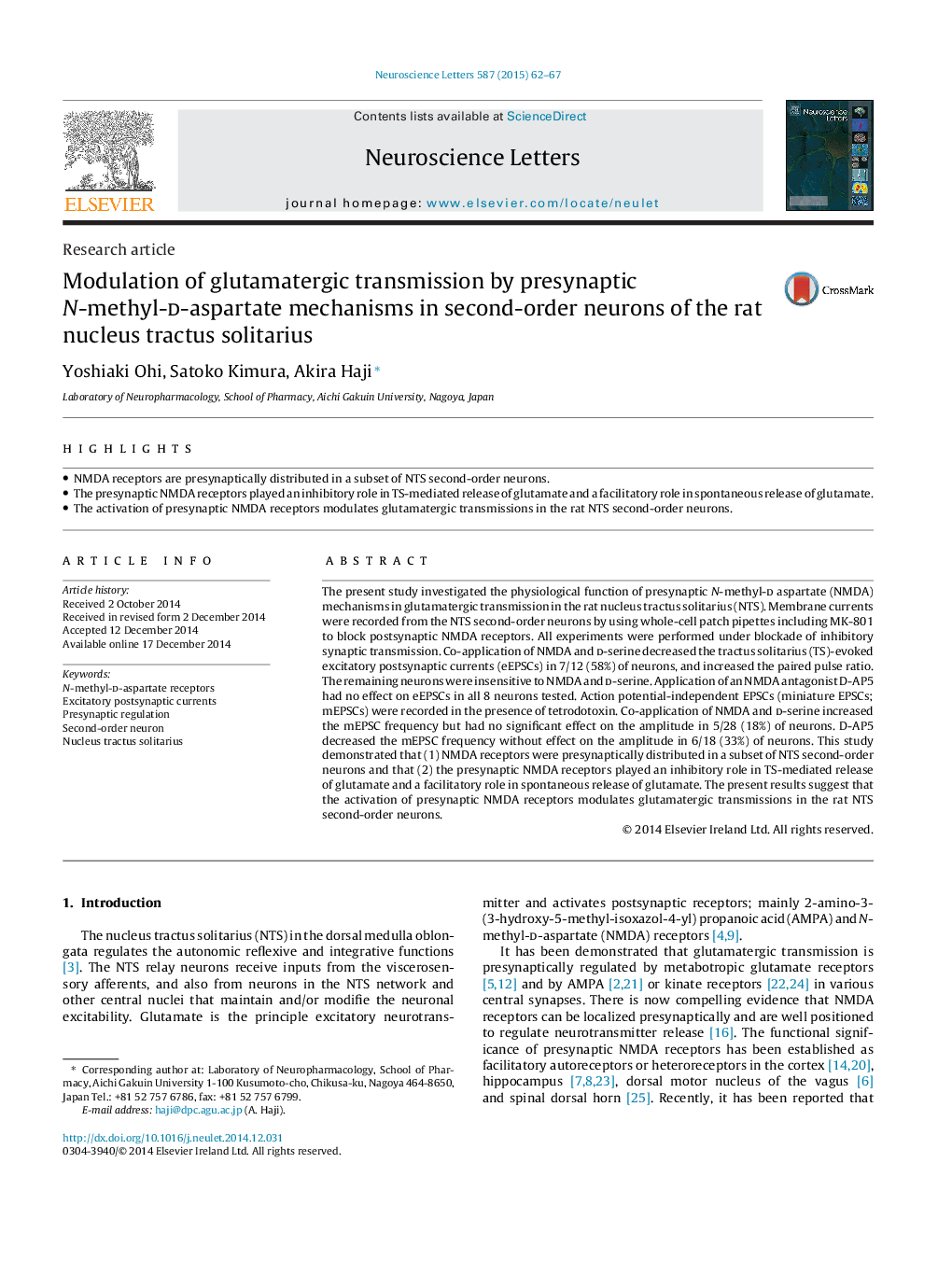| Article ID | Journal | Published Year | Pages | File Type |
|---|---|---|---|---|
| 6281227 | Neuroscience Letters | 2015 | 6 Pages |
Abstract
The present study investigated the physiological function of presynaptic N-methyl-d aspartate (NMDA) mechanisms in glutamatergic transmission in the rat nucleus tractus solitarius (NTS). Membrane currents were recorded from the NTS second-order neurons by using whole-cell patch pipettes including MK-801 to block postsynaptic NMDA receptors. All experiments were performed under blockade of inhibitory synaptic transmission. Co-application of NMDA and d-serine decreased the tractus solitarius (TS)-evoked excitatory postsynaptic currents (eEPSCs) in 7/12 (58%) of neurons, and increased the paired pulse ratio. The remaining neurons were insensitive to NMDA and d-serine. Application of an NMDA antagonist D-AP5 had no effect on eEPSCs in all 8 neurons tested. Action potential-independent EPSCs (miniature EPSCs; mEPSCs) were recorded in the presence of tetrodotoxin. Co-application of NMDA and d-serine increased the mEPSC frequency but had no significant effect on the amplitude in 5/28 (18%) of neurons. D-AP5 decreased the mEPSC frequency without effect on the amplitude in 6/18 (33%) of neurons. This study demonstrated that (1) NMDA receptors were presynaptically distributed in a subset of NTS second-order neurons and that (2) the presynaptic NMDA receptors played an inhibitory role in TS-mediated release of glutamate and a facilitatory role in spontaneous release of glutamate. The present results suggest that the activation of presynaptic NMDA receptors modulates glutamatergic transmissions in the rat NTS second-order neurons.
Keywords
Related Topics
Life Sciences
Neuroscience
Neuroscience (General)
Authors
Yoshiaki Ohi, Satoko Kimura, Akira Haji,
